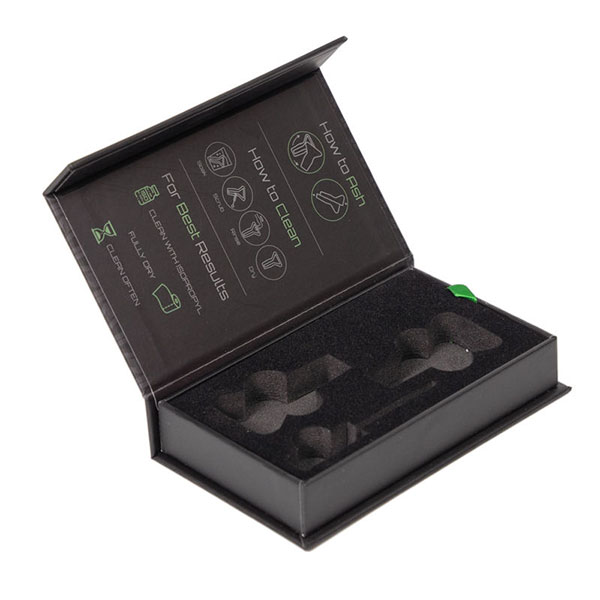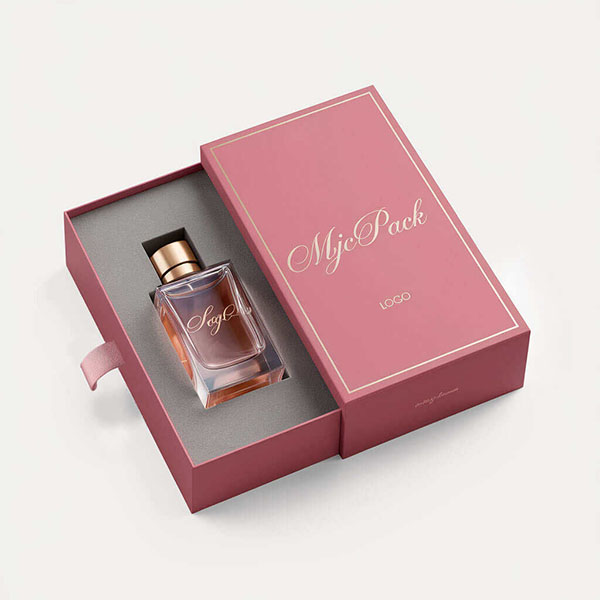
The best custom packaging foam inserts depend on a product’s size, weight, fragility, and shipping conditions. Companies must match foam types and designs to their packaging needs, considering both product protection and cost. Working with a packaging provider and requesting samples often leads to better outcomes. Recent industry data shows that custom packaging can increase in-store sales by up to 30%, and brands using customized packaging see higher customer loyalty. Sustainable packaging materials cost more, so businesses must weigh protection against budget. Custom cut foam inserts and custom foam inserts for boxes help protect products and deliver tailored packaging solutions.
Key Takeaways
Choose foam inserts based on your product’s size, weight, and fragility to ensure maximum protection during shipping.
Different foam materials like polyurethane, polyethylene, and EVA offer unique benefits; select the one that fits your product’s needs and shipping conditions.
Custom-cut foam inserts provide a snug fit that prevents movement and damage, improving product safety and customer satisfaction.
Balance protection and cost by considering foam density, thickness, and material; investing in premium foam can reduce damage and save money long-term.
Work with packaging experts and request samples to test foam inserts before buying, ensuring the best fit and performance for your products.
Custom Packaging Foam Inserts
Why Protection Matters
Protection stands as the primary goal of custom packaging foam inserts. Many industries rely on these solutions to keep products safe during shipping and storage. Improper packaging can lead to damaged goods, financial losses, and even harm to consumers. For example, billions of dollars in pharmaceutical products become ineffective each year due to poor packaging or temperature control. The pharmaceutical supply chain involves many handlers, which increases the risk of human error and product damage.
Improper packaging, storage, or shipping can result in:
Product damage and financial loss
Patient harm and lawsuits
Reputational damage for companies
Custom foam inserts provide structured support and cushioning. They help absorb shocks and prevent impact damage. This level of protection is especially important for temperature-sensitive or fragile items. A 2015 survey of supply chain experts found that 51% of temperature-sensitive products shipped required ambient conditions, while 31% needed refrigeration. These statistics highlight the need for precise protective packaging.
Preventing Damage in Transit
Custom foam inserts play a vital role in preventing product movement and breakage during shipping. Foam packaging solutions are custom-molded to fit the exact shape and size of products, holding them firmly in place. This snug fit reduces shifting and protects all corners of delicate items. Businesses often use packaging inserts for high-value or fragile goods such as glassware, collectibles, and machinery parts.
A case study from Jones Company showed that after switching to custom foam inserts, damage claims dropped from 36% to zero.
Sector | Percentage of Products Using Custom Foam Inserts | Impact on Transit Damage Claims |
|---|---|---|
High-end Medical & Automotive | Over 55% | Significant reduction in transit damage |
Case Study (Jones Company) | N/A | Damage claims reduced from 36% to 0% |
Foam inserts, combined with proper box sizing, absorb shocks and prevent movement inside the box. This reduces scratches, dents, and breakage. Advanced foam packaging materials have reduced breakage rates by up to 25% in glassware logistics. Custom packaging foam inserts and packaging inserts deliver maximum protection and cushioning, making them essential for protective packaging.
Types of Foam Materials

Choosing the right foam material is key to effective product protection. Each foam type offers unique benefits for different packaging needs. Understanding these materials helps companies select the best option for their products.
Polyurethane (PU) Foam
Polyurethane foam stands out for its superior cushioning and shock absorption. Manufacturers can adjust its density and rigidity, making it suitable for a wide range of products. This foam also provides thermal insulation, which helps protect temperature-sensitive items. Studies show that polyurethane foam, when combined with other materials, increases energy absorption and improves protection during impacts. By 2037, polyurethane is expected to hold 57.7% of the market share in foam packaging due to its versatility and performance.
Polyethylene (PE) Foam
Polyethylene foam is known for its durability and flexibility. It resists moisture, making it ideal for products that need long-term storage or shipping in damp conditions. This foam is lightweight and cost-effective, which helps reduce shipping costs. Polyethylene foam is often used for electronics, automotive parts, and other items that require reliable protection.
EVA Foam
EVA (Ethylene-Vinyl Acetate) foam offers excellent shock absorption and vibration damping. Its closed-cell structure provides high water resistance, protecting products from moisture damage. EVA foam is lightweight and easy to handle, which makes it a good choice for shipping fragile or temperature-sensitive items. Companies can customize EVA foam in color, thickness, and shape to fit specific packaging needs. Its resilience allows it to recover its shape after compression, making it suitable for reusable packaging.
Tip: EVA foam’s superior cushioning and water resistance make it ideal for packaging electronics, glassware, and medical devices.
Pick and Pull Grid Foam
Pick and Pull Grid Foam allows users to create custom shapes by removing pre-scored foam squares. This feature makes it adaptable for packaging items of various shapes and sizes. It provides a snug fit and 360-degree protection, especially for delicate objects like cameras or sculptures. Anti-static versions protect electronic components from static discharge. However, users must remove foam carefully, as mistakes can reduce protection.
Anti-Static & Specialty Foams
Anti-static and specialty foams protect sensitive electronics from static electricity and physical shocks. The global market for anti-static foam packaging is growing rapidly, driven by the demand for electronics and e-commerce. These foams come in different types, such as pink anti-static and black conductive foam, each offering varying levels of static protection. Specialty foams also include sustainable and bio-based options for companies seeking eco-friendly solutions.
Foam Material Type | Market Share / Key Statistic | Application Highlights |
|---|---|---|
Polyurethane | 57.7% revenue share by 2037 | Superior cushioning, thermal insulation, customizable |
Polyethylene | Significant growth projected | Durable, moisture-resistant, cost-effective |
EVA | High water resistance, customizable | Shock absorption, reusable, lightweight |
Pick and Pull | Adaptable, easy to use | Custom fit for irregular shapes, anti-static options |
Anti-Static/Specialty | Electronics, automotive, sustainable packaging |
Note: Understanding the main types of foam materials helps companies match the right foam to their product’s needs, ensuring maximum protection and cost efficiency.
Choosing the Right Insert
Assess Product Size & Weight
Selecting the best foam insert starts with a careful assessment of product size and weight. Larger or heavier products need firmer and denser foam to prevent shifting and damage during transit. Lighter items often require softer foam that cushions without adding unnecessary bulk. The density of foam, measured by the weight of a 12x12x12 inch block, indicates its durability and support. Higher density foams provide more protection for heavy items, while lower density foams suit lightweight or delicate goods.
Aspect | Description |
|---|---|
Heavier products require firmer foam for adequate support. | |
Higher density means more durability and better support. | |
Density Ratings | Range from 1.8 (extra soft) to 3.2 (extra firm), guiding firmness selection. |
Firmness (ILD/IFD) | Higher values indicate firmer foam. |
Selection Factors | Firmer and denser foam recommended for heavier or more durable needs. |
Regulatory Notes | Some regions require fire-resistant foam. |
Tip: Always match foam density and firmness to the weight of the product to avoid bottoming out or excessive compression.
Consider Fragility & Perishability
Product fragility and perishability play a major role in the decision-making process. Fragile items such as glassware, electronics, and medical devices need foam inserts that absorb shocks and prevent movement. Low-density foam offers excellent cushioning for these items, reducing the risk of breakage. Perishable goods, like food and pharmaceuticals, benefit from foam with moisture barriers and thermal insulation. Polyurethane foam is often chosen for delicate products because it provides both vibration and impact protection. Polyethylene foam works well for pharmaceuticals due to its chemical resistance and moisture barrier.
Expanded and extruded polystyrene foams dominate packaging for electronics and perishables.
Flexible foam types conform to irregular shapes, making them ideal for fragile items.
Customization options, such as anti-static or temperature-resistant foam, help align packaging with product needs.
Evaluate Shipping & Storage Conditions
Shipping and storage conditions can affect the performance of custom foam inserts. Products that travel long distances or face rough handling need inserts that absorb shocks and minimize movement. Temperature-sensitive items require foam with thermal insulation properties. For medical devices, packaging must also resist punctures and tears and comply with strict regulations. Foam inserts molded to fit the product shape provide a snug fit, reducing the risk of damage during shipping. Lightweight foam packaging also helps lower shipping costs while maintaining protection.
Polyurethane foam dominates protective packaging due to its shock absorption and thermal insulation.
Foam inserts molded to product shapes minimize movement and damage.
Regulatory frameworks require robust packaging tested for shipping and storage conditions.
Foam Density & Thickness
Foam density and thickness are critical factors in achieving the right balance between protection and cost. High-density foams offer better support and durability, making them suitable for heavy or less fragile items. Low-density foams provide superior cushioning for fragile items. Thickness should be adjusted to prevent compression under load. For heavy or fragile items, thicker foam inserts prevent bottoming out and absorb more impact. Custom foam inserts can be precisely cut to fit the product, ensuring a snug fit and maximum protection.
Empirical studies show that foam density and thickness directly influence energy absorption and impact load reduction. Higher density foams retain their properties longer and support heavier products. Firmness, measured by Indentation Force Deflection (IFD), relates to surface feel, while support factor quantifies the foam’s ability to support weight. Adjusting both density and thickness ensures that the foam insert matches the product’s needs.
Note: Custom foam inserts tailored to product size, weight, and fragility provide the best protection. Always choose the right insert by considering all these factors together.
Custom Foam Inserts & Design

Custom Fit & Shape
Custom foam inserts can be tailored to match the exact shape and size of any product. Manufacturers cut, shape, or mold foam to cradle items securely. This precise fit prevents movement inside the package, which reduces the risk of damage during shipping. Even if the outer box is strong, products can shift and break without proper internal support. Form-fitting foam inserts hold items snugly and absorb shocks and vibrations. Companies often use these inserts for fragile goods, electronics, and medical devices.
Custom-cut foam cradles fragile items and minimizes movement.
Proper cushioning absorbs impacts and protects products from scratches or dents.
Filling empty spaces inside the box prevents shifting and breakage.
A custom foam insert provides a protective barrier that keeps products safe throughout transit.
Branding & Printing Options
Custom foam inserts offer more than just protection. Companies can use printing and branding options to enhance the customer experience. Research shows that personalized packaging increases positive feelings toward a brand. For example, Deloitte found that 60% of consumers feel more connected to brands with custom packaging. Printed logos, instructions, or graphics on foam inserts create a memorable unboxing experience. These features also help with product tracking and brand recognition. Campaigns like Coca-Cola’s “Share a Coke” and Nutella’s custom labels show how printed customization boosts engagement and sales. Personalized packaging encourages customers to share their experiences, which increases brand visibility.
Selecting the Right Foam
Selecting the right foam involves understanding technical data and product needs. Foam density, hardness, and structure affect protection and durability. For example, foam density measures the amount of material in a given volume, which relates to longevity and support. Hardness, measured by Shore durometer scales, indicates how firm or soft the foam feels. Other factors include thermal insulation (R-value), tear strength, water absorption, and flame resistance. Companies should review these parameters to match foam properties to their products. Consulting packaging experts helps ensure the best choice. Experts can recommend fabrication methods and test samples for fit and performance. Selecting the right foam ensures that custom foam inserts deliver both protection and value.
Picking the Right Material & Balancing Cost
Cost vs. Protection
Balancing cost and protection remains a top priority when picking the right material for custom foam inserts. Companies must weigh the level of protection required against their budget. Market trends show that different foam types offer unique benefits and price points:
Polyurethane foam provides soft, cost-effective protection for lightweight, delicate items. It lacks durability and water resistance.
Polyethylene foam delivers high-density, rigid support and water resistance for heavy-duty packaging needs. It costs more and offers less cushioning.
EVA foam strikes a balance, offering lightweight, semi-rigid protection with moderate cost and good impact resistance.
Anti-static foam protects sensitive electronics by preventing static discharge. It balances durability and weight but serves specific uses.
Customization options, such as colored foam or laser etching, add branding value but can increase costs.
The global foam packaging market continues to grow, driven by e-commerce and a shift toward custom-molded packaging solutions. Companies now seek packaging solutions that combine cost efficiency, high-quality material, and environmental responsibility.
When to Invest in Premium Options
Investing in premium foam inserts makes sense for products that are fragile, high-value, or sensitive to environmental factors. Premium options often use advanced materials or custom designs to provide superior protection. For example, electronics and medical devices benefit from anti-static or water-resistant foam. Customization, such as branded inserts, can enhance the customer experience and support marketing goals. Companies should consider premium packaging solutions when product loss or damage would result in significant financial or reputational harm.
Tip: Premium foam inserts may cost more upfront, but they can reduce damage claims and improve customer satisfaction over time.
Consult Experts & Request Samples
Consulting a packaging provider and requesting samples helps companies make informed decisions. Experts can recommend the best foam type and design based on specific packaging needs. Data from healthcare settings shows that investing in the right foam solutions, even at a higher initial cost, leads to significant savings by preventing costly damage or loss. For example, hospitals that used foam dressings for patient care spent much less on prevention than on treating injuries. Requesting samples allows companies to test fit, durability, and performance before committing to large orders.
Benefit of Consulting Experts | Impact |
|---|---|
Tailored recommendations | Better fit for product and shipping conditions |
Sample testing | Confirms protection and quality before purchase |
Cost savings | Reduces risk of product damage and returns |
Choosing the right foam insert involves careful evaluation of both protection and cost. Companies that work with experts and test samples find the best balance for their packaging solutions.
Selecting the right custom packaging foam inserts involves several key steps:
Identify product fragility and weight to guide foam selection.
Calculate static stress and choose foam type, density, and thickness for optimal support.
Test inserts using industry standards to ensure real-world performance.
Comprehensive evaluations, including tamper-proof features, improve product safety and reduce returns. Protective packaging with custom foam inserts can lower damage rates to under 1% and help protect products during shipping. Companies should consult experts and request samples to achieve the best results.


